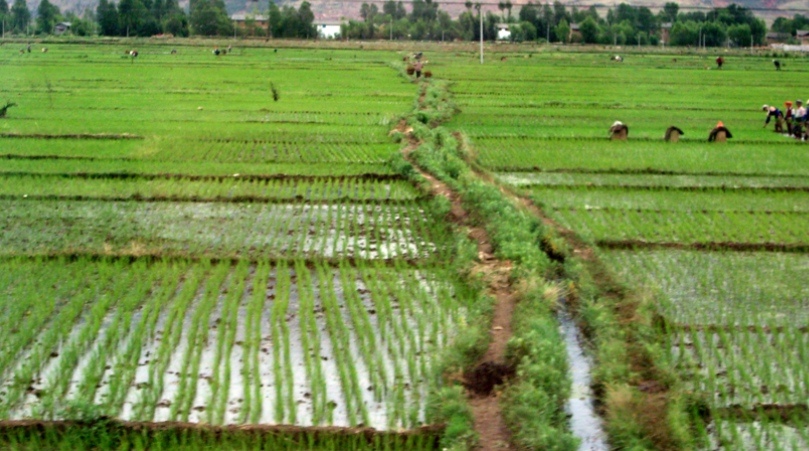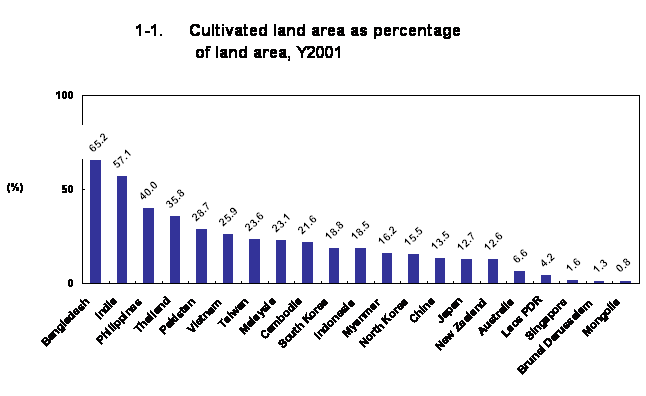
The Dominant Animal: Chapter 5, Cultural evolution: How we relate to one another.
an on line guide
Joseph Siry, Americans and the Tidal Seas.
Chapters
Five
The "Back Yard" of Culture is instinctual control of impulses: hypothesis.
Cultural evolution: from before to after agriculture human conditions changed forever.
Rice field workers in Szechwan Province, Southern China.
V. Cultural Evolution: How we Relate to One Another
This fifth chapter contains details that are correlated to significant remarks about the complementary relation of genes to culture in chapter four and should be understood as a keystone.
By keystone it is meant that it holds the ideas in the fourth and sixth chapters together.
Chapters:
One, two and three, are foundation concepts in biological ideas.
Four and six are transition chapters from the biological conditions inherent in dominance to environmental conditions.
Seven, eight, and nine. are foundation chapters for ecological ideas.
{pp. 97-118.
"Genes are relatively stable, mutating rarely, and those changes that do occur usually result in non-finctional products."
"Norms provide a cultural 'stickiness' or viscosity that can help sustain adaptive behavior and retard detrimental changes in society."
p.115
Start | Genome | Crucial details | Arable land | Second law of ecology | Outline | Summary
"Failure of an organism to produce major phenotypic characteristics decreases the organisms reproductive potential in almost any environment."
p. 88
"In summary, as we learn more about the human genome,the notion of genes for behavior (which amounts to genes for cultural characteristics) must be discounted."
pp. 95-96.
"even many genes that greatly influence variation in the trait. It is becoming clear that when genes influence traits, and this applies especially to behaviors, they will do so in a way that is strongly mediated by the environment."
p. 96
-
The roots of warfare { 99 –How environment reinforces behavioral propensities.
Start | Genome | Crucial details | Arable land | Second law of ecology | Outline | Summary
Scarcity and behavioral adaptation.
| Ecology | affect | outcome |
|---|---|---|
drought
|
genetics |
The embryos of women experiencing famines are genetically prone to be female and not male. "ratio of baby boys to baby girls drops" The paternal grandchildren of grandparents who suffered famine are genetically identifiable in propensity for reduced cardiovascular disease risks, or in women lower body weight.
|
| famine | behavior | hoarding can be "–"; while reducing intake "+" |
The diminished extent of arable land is a dilemma.
Amount of arable land cultivated in selected Asian nations:
Percent of arable land means what portions of the nations landscape is farmed, grazed or timbered.
Most of that land is supplied with water from the monsoons, or the melting of Himalayan glaciers.
The following rivers arise in the Himalayan plateau and mountains affecting over three billion people:
Hwang Ho or Yellow River
The Yangtze River
Mekong River
Ganges River
Indus River
Brahmaputra River
Start | Genome | Crucial details | Arable land | Second law of ecology | Outline | Summary
In times of scarcity the renewable capacity of landscape, air, and water [ LAW ] are crucial to recognize and social habits must have encouraged investment in landscape renewal and water storage, long before the existence of periodic shortages.
The capacity of natural systems to renew the sustaining features in habitats that nourish diverse biotic communities has, until now been the basis for the success or failure of human settlements, the enormously powerful agricultural revolution in how we thrive, and the accompanying varieties of urban design.
| L A W | Everything must go somewhere. | laws |
|---|---|---|
| habitat | • There is no away, to which you can throw things. |
"How do norms evolve?
The question is at the very center of the quest to understand cultural evolution and resolve today's human predicament.... Norms provide a cultural stickiness or viscosity that can sustain adaptive behavior and retard detrimental changes in society ....Equally though, stickiness can inhibit the introduction and spread of beneficial behaviors. . . ."
p. 115.
Start | Genome | Crucial details | Arable land | Second law of ecology | Outline | Summary
A matrix for the ways in which outcomes of natural, cultural, inherited, acquired, and sanctioned habits can be evaluated in an evolutionary and developmental sense.
| Nature | milieu | Adaptive | Maladaptive |
|---|---|---|---|
| sources | beneficial | harmful | |
| Inheritance | |||
| traits | Acquired | ||
| ecology | functional |
||
| habitat | inorganic |
√ | |
| biotic | biocoenose |
√ | |
| Culture | √ | ||
| behavior | √ |
The options above suggest there is no linear pattern of development, but instead a feedback among the different parts of any milieu (dynamic cultural and natural environment) that will account for the conditions existing in different places.
So people and places differ due to a series of contingent factors that mutually influence one another to varying degrees of success or failure.
Start | Genome | Crucial details | Arable land | Second law of ecology | Outline | Summary
Not all players in the biological game come equally equipped.
Rates at which society (quickly) —> culture (moderately) —> and genetic (slowly) change.
| sources of human behavior | approximate origins | |
|---|---|---|
| genetic | genotypic, generational | Pliocene |
| cultural | can vary, tool dependent | Medieval (China-Japan-Europe) |
| social | quickly, but superficial | 19th Century-to-decades |
A conclusion is that:
Behavior accelerates the sanctions of culture which lags behind as a drag on social alteration–such as family size.
"Genes are relatively stable, mutating rarely and those changes that do occur usually result in non-functional products."
p. 115.
"In contrast --ideas, behaviors, patterns or units of information that can be passed from mind to mind-- are extremely mutable (change easily), often transforming considerably with each transmission.
pp. 115-116.
Like bacterial reproduction of some genes, our minds can pass along behavioral responses from sensory responsiveness from one organism to another.
But with learning a common language the transfer of behavioral expectations takes on a new, rapidly responsive, but problem-filled set of challenges and opportunities.See Perception, evolution and beliefs.
Start | Genome | Crucial details | Arable land | Second law of ecology | Outline | Summary
- The roots of warfare { 99 –instincts exacerbated by conditions & cultural norms.
- Culture since farming { 105 –why we can never turn back.
- Family Definition and Structure {108 –a means of controlling small group behavior.
- From Family to States {110 –changes when social groups fail to suppress bad habits.
- Norms & Mechanisms of Cultural Evolution {115 –the immediate & long term gamble
Capacity is often hard to see because reality masks the clues.
Many other ways to define nature.
Readings | Vocabulary | Description | Overview | Assignments | Lectures | Index of this course | Grades
technology
index ![]() science index
science index ![]() gene index
gene index ![]() social science index
social science index ![]() photograph index
photograph index ![]() Darwin Index
Darwin Index



